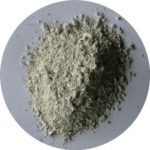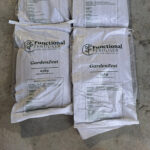PW Burton
In the latest the latest Rural News, February 16, there’s an article headed Everybody’s Job, which begins with, “Dairy NZ Chief Executive Tim Mackle says dairy farming’s reputation with the public matters.
Mackle says the industry’s standing with new Zealanders and its markets impacts the ability to operate profitably and successfully.
“We have to invest in our reputation as we would in any other asset that underpins our competitiveness,” he says.”
In our view if Dairy NZ genuinely wishes to improve its standing with New Zealand public it is going to have to publicly address the use of fertiliser nitrogen.
A recent price release from Ravensdown stated that the $50 reduction in the price of urea provided a potential annual saving to NZ farmers of $37.5m. That equates to 750,000 tonnes of urea being applied to our pastures every year.
If 85% of the 750,000 tonnes of urea is sold to dairy farmers, it means that on average over 200kgN/ha is being applied.
With a significant number of dairy properties receiving less than that amount, and a growing number none at all, it means that there’s a large area of dairy land in the country receiving in excess of 250kgN/ha.
The research supporting the long-term application of nitrogen as an essential driver of permanent pasture growth in this country either doesn’t exist, or it hasn’t been made readily available. In which case we’re keen to see it.
The argument that taking nitrogen out of a pastoral system that has become dependent on it results in lessened growth, and therefore it’s essential, is logically little different to arguing that an alcoholic is better off with alcohol because of the withdrawal symptoms suffered when it’s no longer available.
It’s an argument based on a false premise that even primary children don’t buy into. Some years ago I was shown a project by 12 year olds at a Primary School in the Hauraki Plains that tied the loss of top soil and excess nutrient run-off into the Firth of Thames to the overuse of fertiliser nitrogen.
If those children are wrong Dairy NZ best launch a charm offensive and clearly state the benefits of the current annual application of three quarters of a million tonnes of urea.
The argument put forward so far in its defence is that, without its application, total farm production would decline, the logic being that less nitrogen results in lessened pasture growth, fewer cows, lower incomes, with farmers and rural communities bearing the costs.
A paper by Peter Fraser et al, delivered at an Agricultural Economics conference in Wellington in 2014, entitled “The Intensification of the NZ Dairy Industry – Ferrari cows being run on two-stroke fuel on a road to nowhere?” states that the argument that less environmental ‘nasties’ means fewer cows and lower revenue is an argument that is intuitively appealing but “without some form of analytical foundation it is merely unsubstantiated rhetoric masquerading as fact.”
There is much scientific data we treat with reverence, and scientists we regard as very fine individuals. However until the issue of dairy farm production being driven by excessive nitrogen applications is proven to be environmentally ‘safe’ long term, the current advice from AgResearch and DairyNZ would seem to be leading farmers up a very short garden path.
We’re heartened by the statement by Richard McDowell, the AgResearch professor heading the land and water challenge, that he and his fellow researchers face a tight time frame for achieving the initiatives’ twin goals of improving land and water quality while enhancing primary sector productivity, as the longer the present situation remains the more expensive the clean-up will be.
Part of their challenge, he says, is identifying rural entrepreneurs whose work may not have been fully researched, but does offer some solutions. We’re keen to assist, and our contact is [email protected] or phone 0800 843 809.




